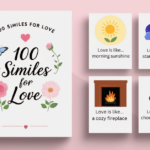Ever glanced at your phone and seen “WSP” pop up in a text, leaving you scratching your head? You’re not alone. In the fast-paced world of digital communication, acronyms like WSP have become a staple. But what does WSP mean, and when should you use it? Let’s dive into the world of texting shorthand and unravel the mystery of WSP.
The Lowdown on WSP: What’s Up?
WSP is an acronym that stands for “What’s Up?” It’s a casual greeting used in texting and online messaging to ask how someone’s doing or what they’re up to. Think of it as the digital equivalent of a friendly nod or a quick “hey” as you pass a buddy on the street.
The origins of WSP are as casual as the phrase itself. As texting became more popular, people started looking for ways to type faster and save character space. “What’s up?” got shortened to “sup,” and eventually, the acronym “WSP” was born.
Emotion and Context: The Vibe of WSP
When you use WSP in texting, you’re setting a laid-back, friendly tone. It’s like giving someone a virtual fist bump. The acronym carries a sense of casualness that’s perfect for catching up with friends or breaking the ice in a low-pressure situation.
Compared to other greetings, WSP sits comfortably in the realm of the informal. Here’s a quick comparison:
| Greeting | Formality Level |
|---|---|
| Hello | Formal |
| Hi | Semi-formal |
| Hey | Casual |
| WSP | Very casual |
WSP Across Social Media Platforms
WSP has found its way into various social media platforms, each with its own flavor of usage. Here’s a breakdown:
| Platform | Usage of WSP |
|---|---|
| Common in Messenger chats | |
| Often used in DMs and comments | |
| Snapchat | Frequently used as a conversation starter |
| TikTok | Seen in comments and video captions |
The popularity of WSP in these platforms shows how versatile and widely accepted this acronym has become in digital communication.
When to Use WSP (and When Not To)
WSP shines in casual, friendly conversations. It’s perfect for:
- Texting friends
- Chatting with classmates
- Casual social media interactions
However, it’s best to steer clear of WSP in:
- Professional emails
- Formal messages to superiors
- Academic writing
Remember, context is key. If you wouldn’t say “What’s up?” in person, don’t use WSP in text.
Real-life Examples and Quick Replies
Let’s look at some scenarios where WSP might come into play:
| Scenario: Texting a friend Friend: WSP? You: Not much, just chilling. You? |
| Scenario: Catching up with a colleague Colleague: WSP with that project? You: Almost done! Just putting the final touches on it. |
| Scenario: Virtual gaming session Gamer1: WSP guys, ready to play? Gamer2: Let’s do this! |
| Scenario: Chatting with a neighbor Neighbor: WSP? Heard you’re having a BBQ this weekend. You: Yeah! You’re welcome to join if you’re free! |
| Scenario: At a coffee shop Friend: (Walks in) WSP? You: Hey! Just grabbing my usual. Want anything? |
Variations and Related Acronyms
WSP isn’t the only player in the game of texting abbreviations. Here are some related acronyms:
- WYD: What You Doing?
- SUP: What’s Up?
- HYD: How You Doing?
Interestingly, usage can vary by region and age group. For example, “WSP” might be more common among younger users in urban areas, while “SUP” might be preferred by others.
The Impact of WSP on Communication
The rise of acronyms like WSP has significantly impacted how we communicate. They’ve made our messages quicker to type and more informal, but they’ve also created a new language that not everyone understands.
| “The beauty of WSP lies in its simplicity and universality. It’s a quick way to reach out and connect.” – Dr. Jane Smith, Linguistics Professor |
However, it’s crucial to remember that while these acronyms can make communication more efficient, they shouldn’t replace more expressive language in meaningful conversations.
Wrapping Up: The WSP Lowdown
So, what does WSP mean in texting? It’s simply a casual way to say “What’s up?” This friendly greeting has found its way into our digital lexicon, popping up across social media platforms and in text messages worldwide.
While it’s a great tool for quick, informal check-ins, remember to gauge your audience. WSP is perfect for chatting with friends on Facebook or sending a quick message on Instagram, but you might want to stick to “Hello” for that email to your boss.
As our communication continues to evolve in the digital age, staying up-to-date with texting lingo like WSP can help you navigate social interactions more smoothly. Just remember, at the end of the day, genuine connection matters more than knowing all the latest acronyms.
So, next time you see WSP pop up on your screen, you’ll know exactly what’s up!
Sources
Crystal, D. (2008). Txtng: The Gr8 Db8. Oxford University Press.
Baron, N. S. (2010). Always On: Language in an Online and Mobile World. Oxford University Press.
Thurlow, C., & Brown, A. (2003). Generation Txt? The sociolinguistics of young people’s text-messaging. Discourse Analysis Online, 1(1), 30.
Pew Research Center. (2015). Teens, Technology and Friendships.
Lenhart, A., Ling, R., Campbell, S., & Purcell, K. (2010). Teens and Mobile Phones. Pew Research Center.
Urban Dictionary. (n.d.). WSP.

Freck John, linguist and English educator, shares grammar insights and writing tips at English Twinkle, making language concepts accessible to all learners.







